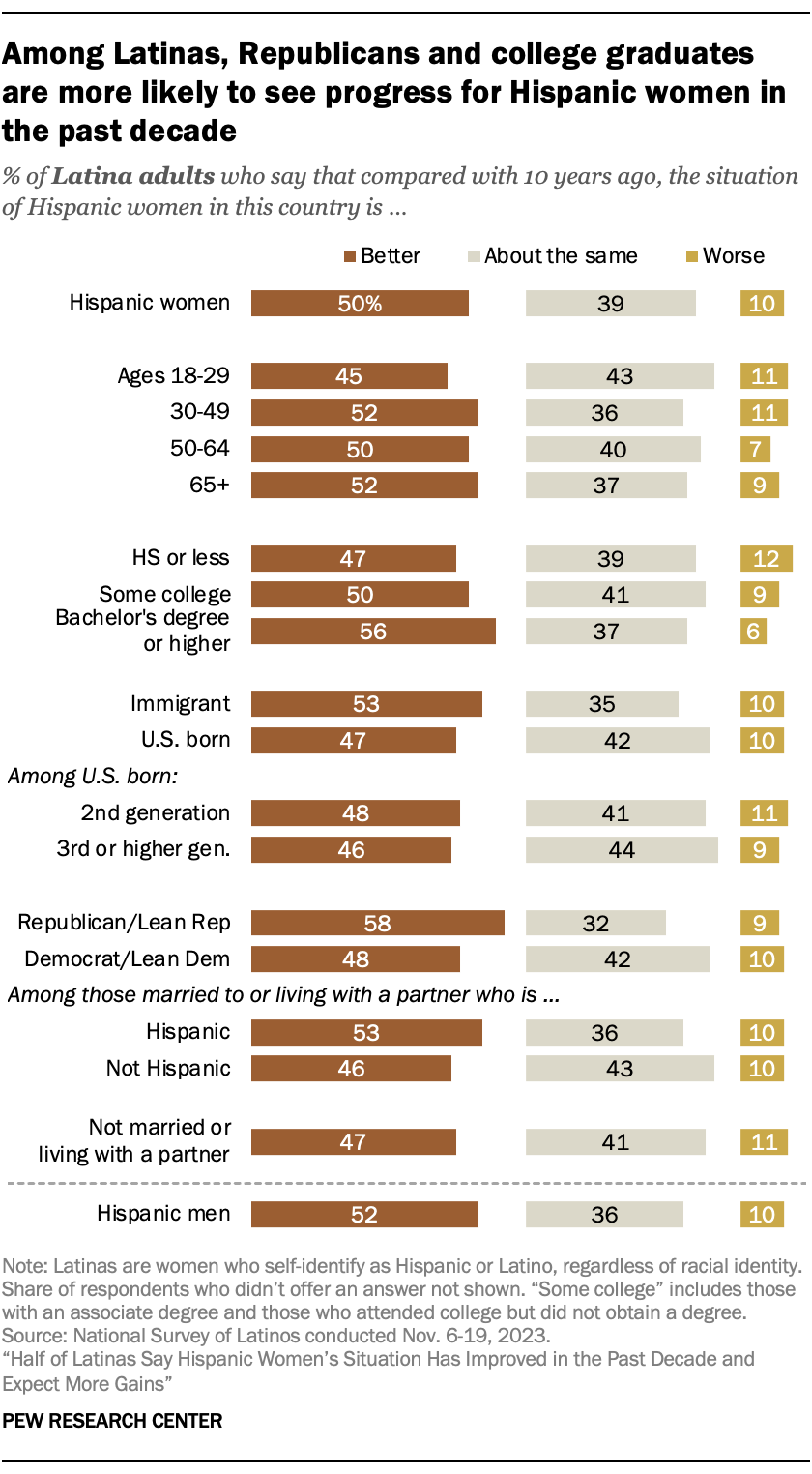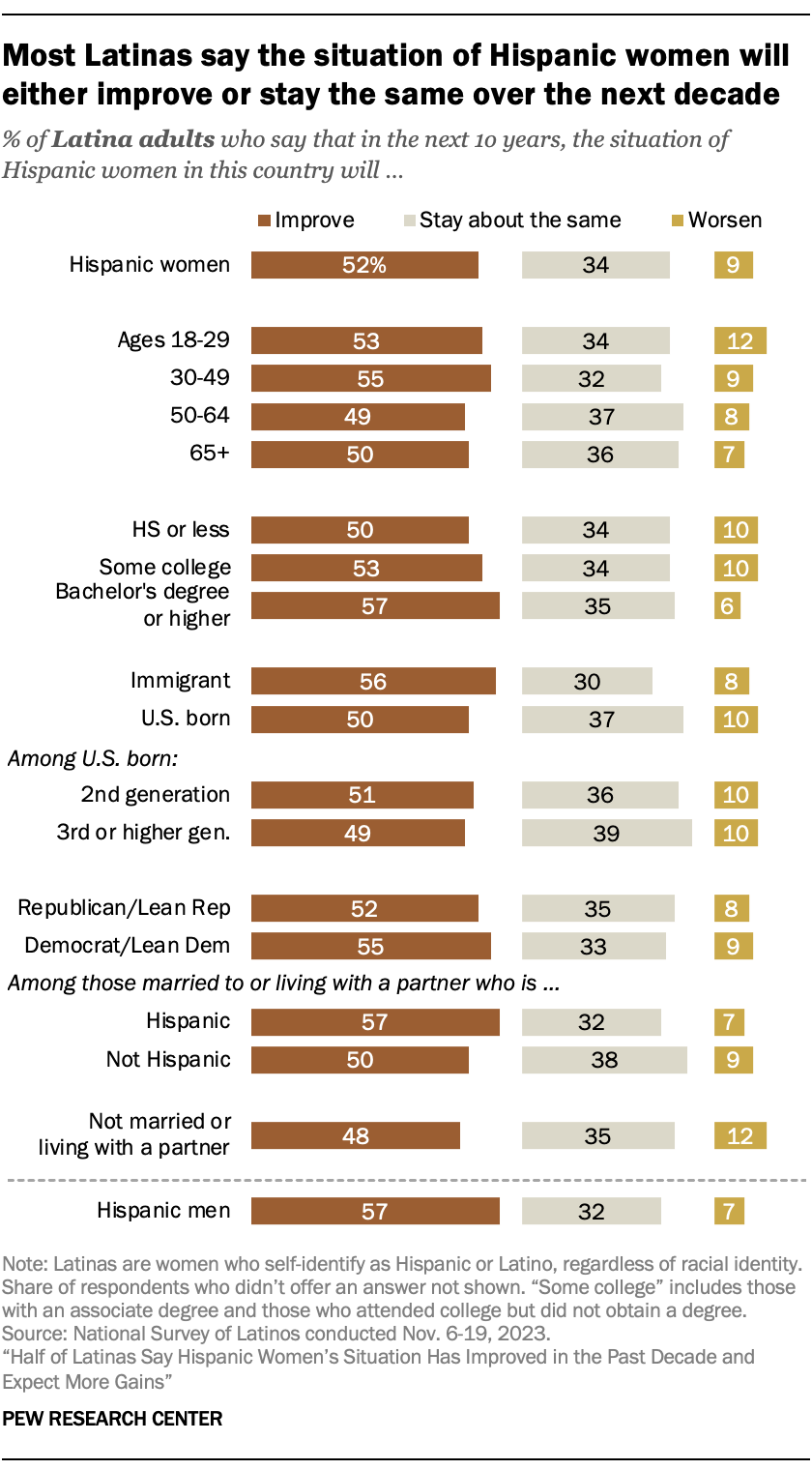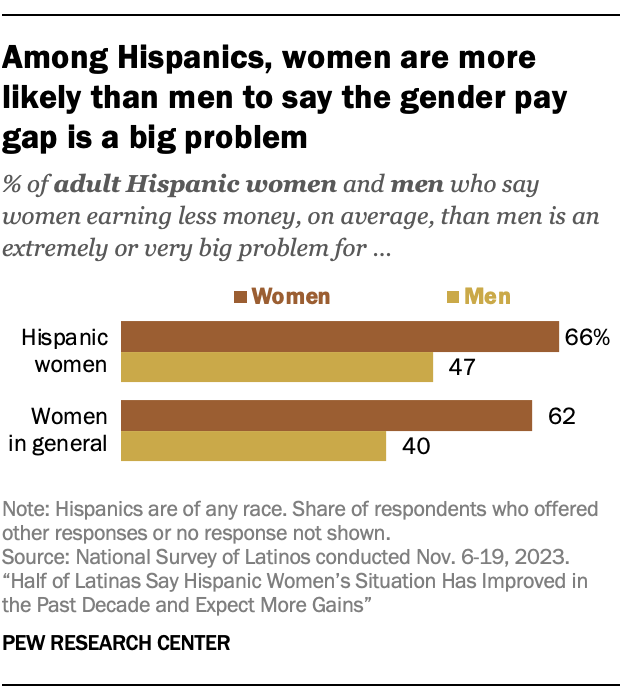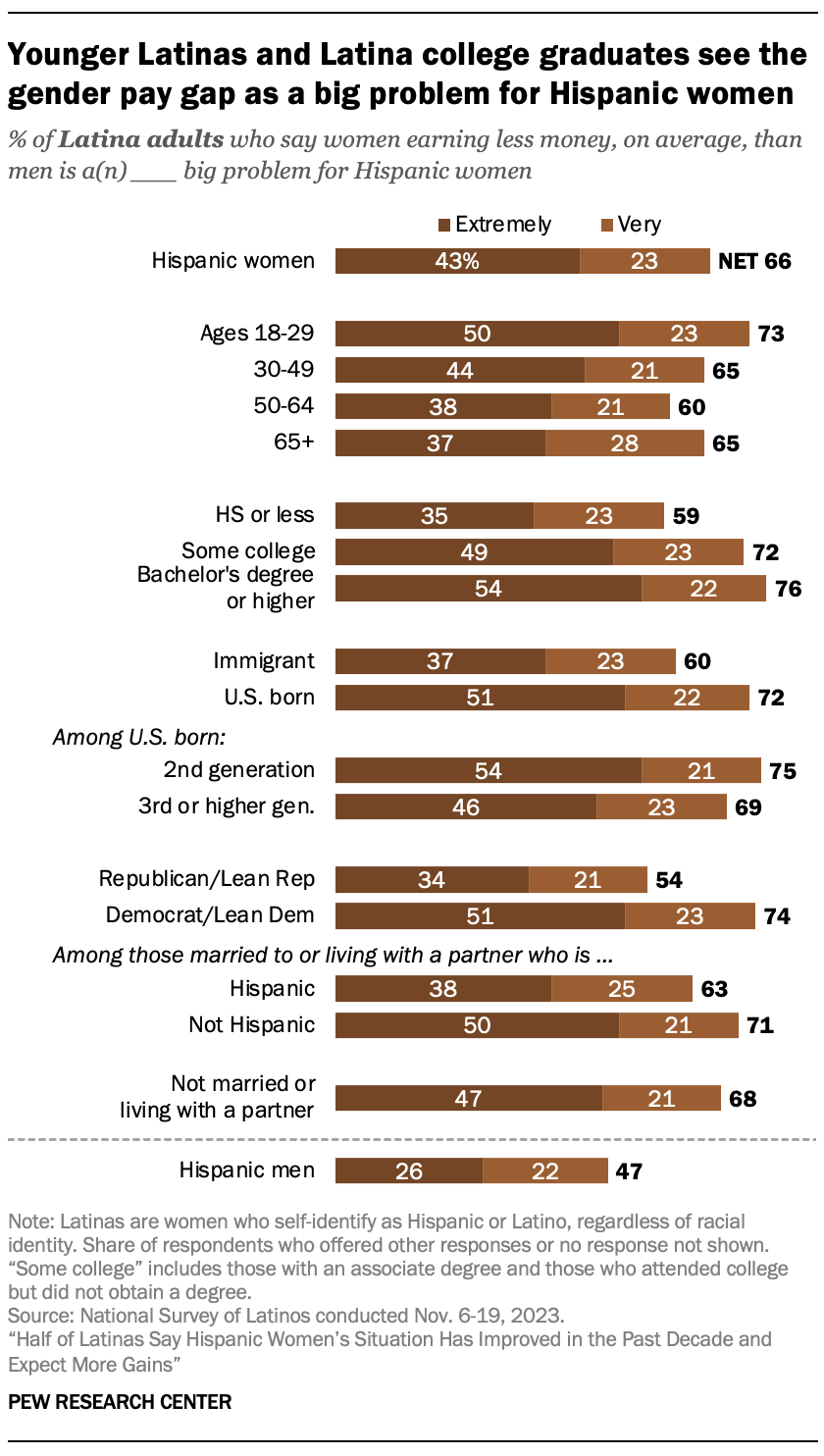
Half of Latinas see progress in Hispanic women’s situation in the United States during the last decade, and a similar share expect their group’s situation will improve in the next 10 years. Yet two-thirds of Latinas say the gender wage gap is a big problem for Hispanic women today. This chapter examines Latinas’ views of the situation of Hispanic women in the past, present and future.
Assessing the progress of Hispanic women in the last 10 years
While half of Latinas say the situation of Hispanic women in the U.S. has improved in the last 10 years, 39% say the situation has stayed the same, and 10% say the situation has worsened.
Meanwhile, a similar share of Hispanic men (52%) say the situation of Latinas has improved in the last decade, while about a third (36%) say the situation has stayed the same and 10% say it has worsened.
Here is how different groups of Latinas assess Hispanic women’s progress in the last 10 years:
- Partisanship: 58% of Latinas who identify as Republican or lean toward the Republican Party say the situation of Hispanic women has improved in the last decade, compared with 48% of Latinas who identify as Democrats or lean Democratic.
- Age: 45% of Latinas ages 18 to 29 say the situation of Hispanic women in the U.S. has improved in the last decade, compared with about half of Latinas ages 30 and older.
- Education: Most Latinas with a bachelor’s degree or higher (56%) say the situation of Hispanic women in this country has improved. By comparison, 47% of Latinas with a high school diploma or less say the same.
- Nativity: Latinas born outside the U.S. are more likely to see progress in Hispanic women’s situation than those born in the U.S. – 53% vs. 47%, respectively.
Views of Hispanic women’s situation in the next 10 years

About half of Latinas say the situation of Hispanic women in the U.S. will improve in the next 10 years, and a third say the situation will continue to stay the same. Among Latinas, those who are immigrants and those married to or living with a Hispanic partner are more optimistic about the future of Hispanic women’s situation in the U.S. than their counterparts.
Hispanic men are more likely than Hispanic women to say that Hispanic women’s situation in the U.S. will improve in the next decade. Slightly more than half of Hispanic men hold this view (57% vs. 52%, respectively).
Among Latinas, views vary slightly by demographic characteristics.
- Education: Latinas with a bachelor’s degree or higher are more likely to say the situation of U.S. Hispanic women will improve in the coming decade than Latinas with a high school diploma or less (57% vs. 50%).
- Nativity: Latina immigrants are more likely than those born in the U.S. to say that Hispanic women’s situation will improve (56% vs. 50%).
Views on the gender pay gap

A majority of Hispanic women say that women earning less than men (i.e., the gender pay gap) is an extremely or very big problem for both Hispanic women (66%) and for women in general (62%). Hispanic men are much less likely than Hispanic women to say the pay gap is a big problem for Hispanic women or women in general.
Here is how different groups of Latinas view the gender pay gap:

- Age: 73% of Latinas ages 18 to 29 say the gender pay gap is an extremely or very big problem for Hispanic women, compared with 60% of those 50 to 64.
- Education: Latinas with a bachelor’s degree or higher are more likely to than Latinas with a high school diploma or less to view the gender wage gap as an extremely or very big problem for Hispanic women (76% vs. 59%).
- Partisanship: 74% of Latina Democrats say the gender pay gap is an extremely or very big problem for Hispanic women, compared with 54% of Latina Republicans.
- Nativity: Latinas born in the U.S. (72%) are more likely than Latina immigrants (60%) to say the gender wage gap is an extremely or very big problem for Hispanic women.




